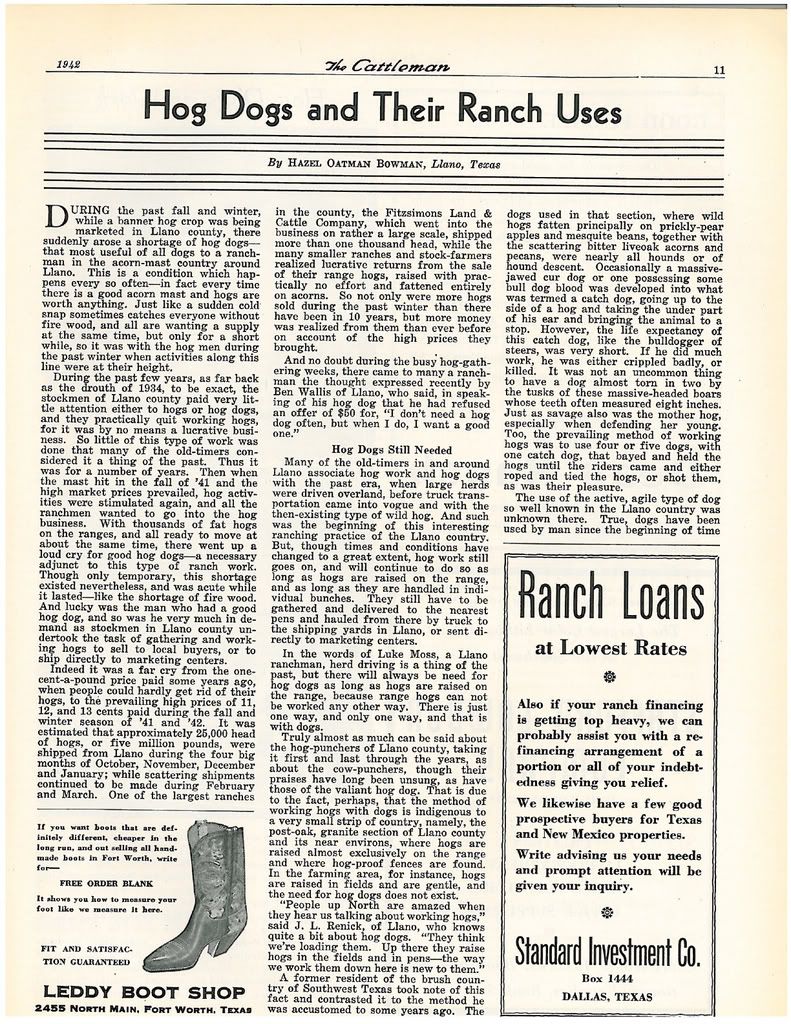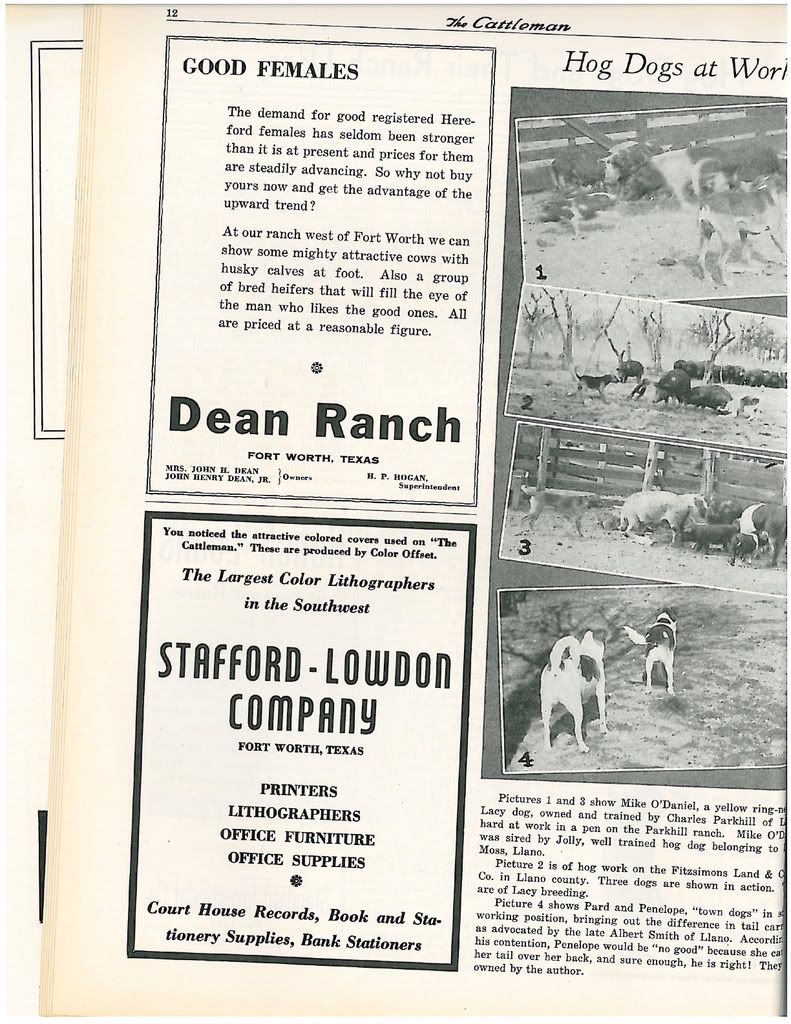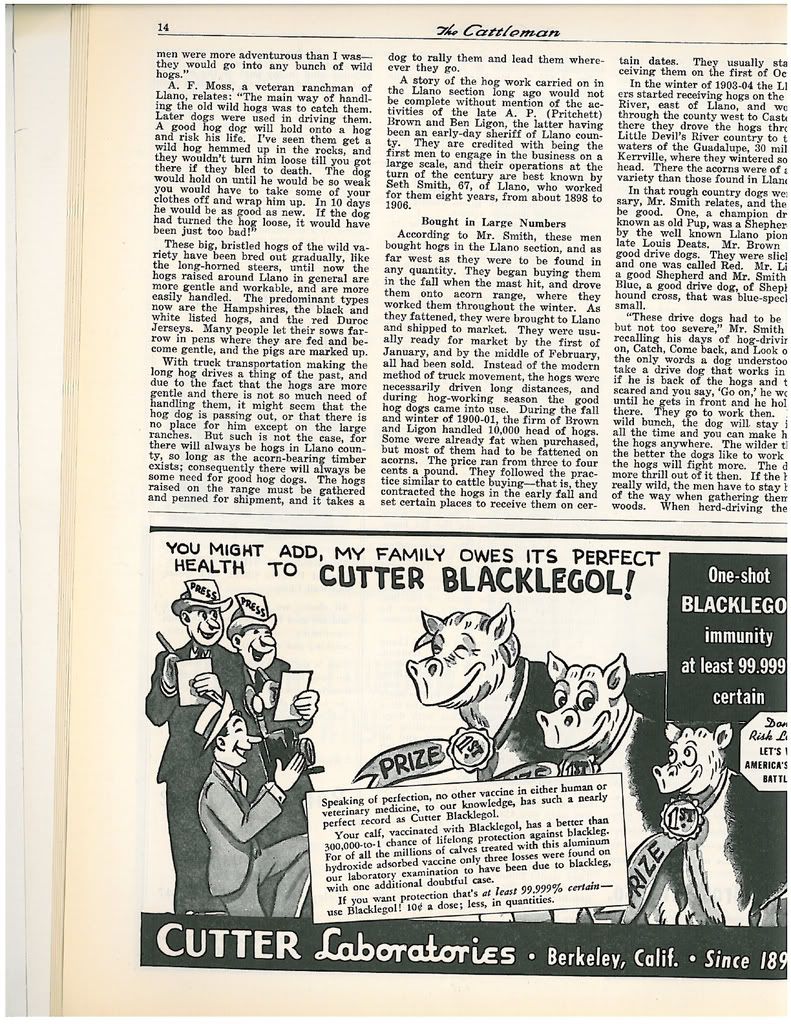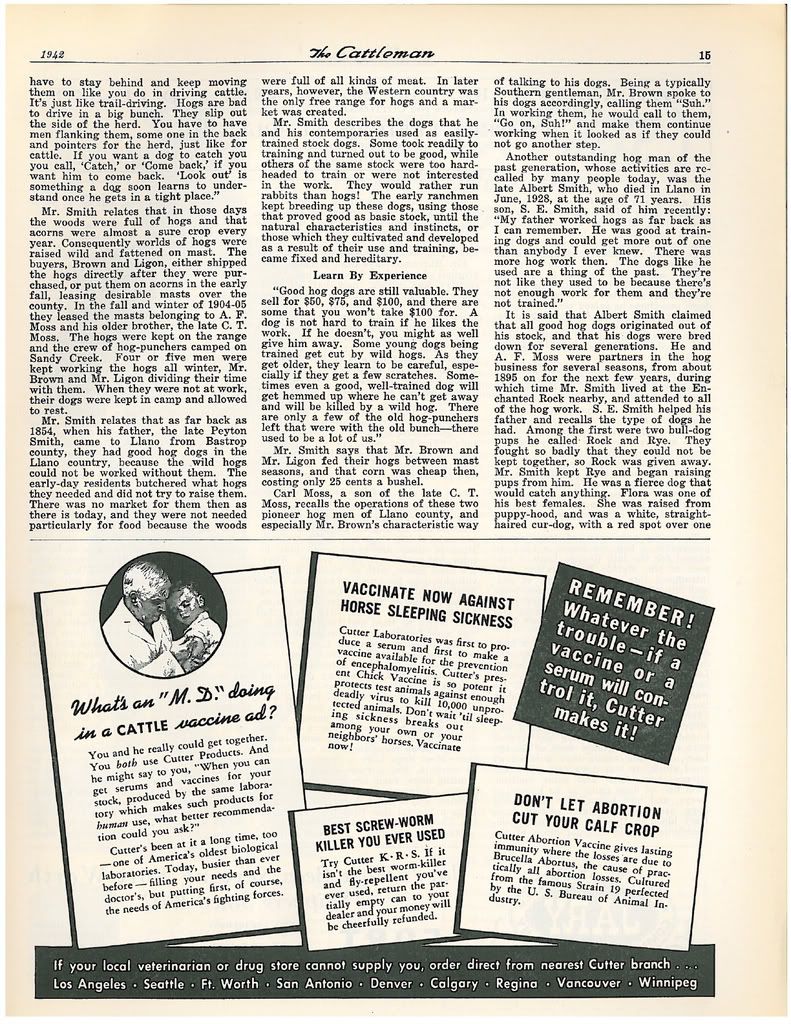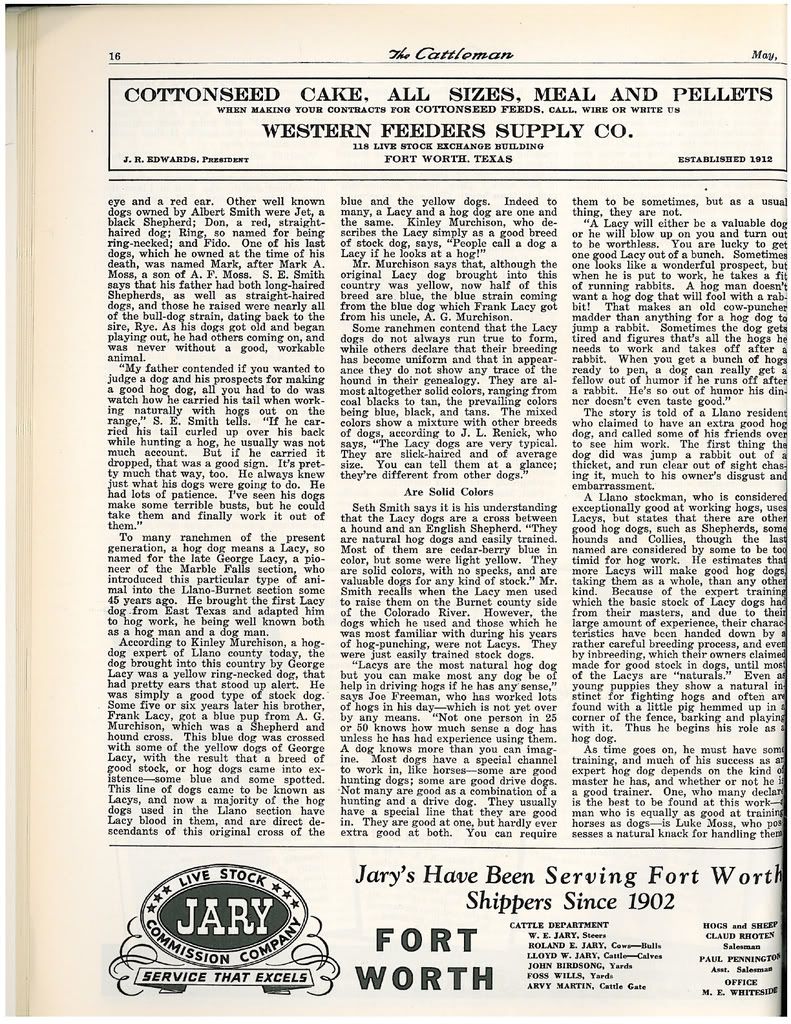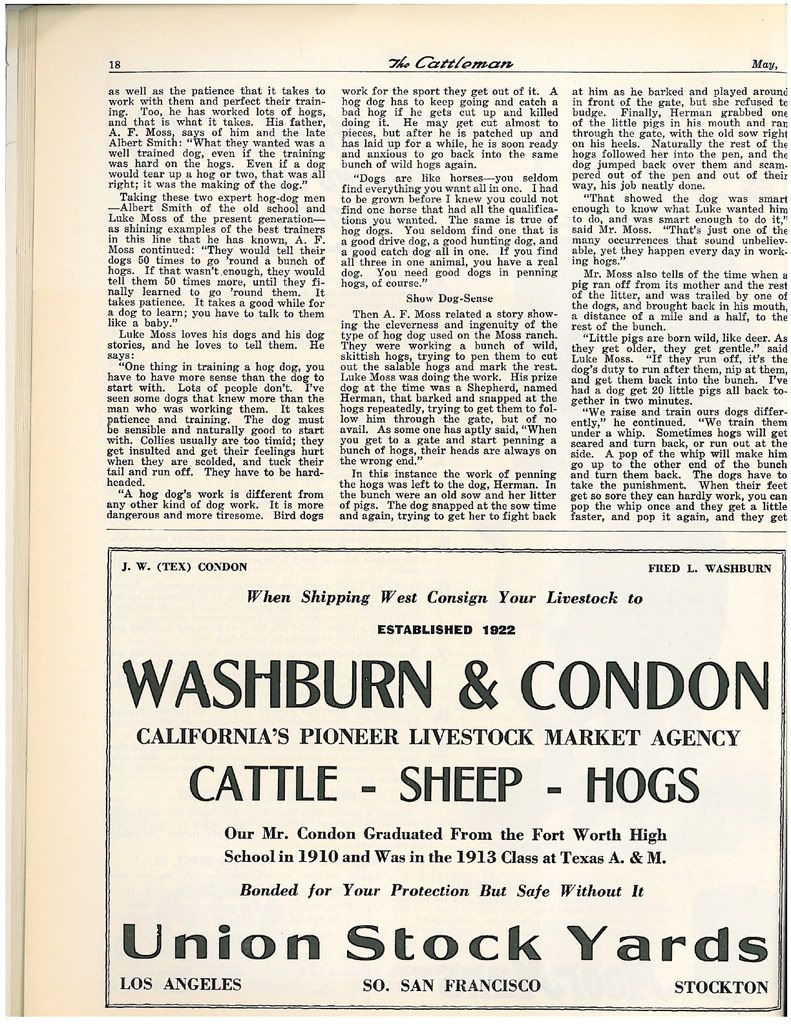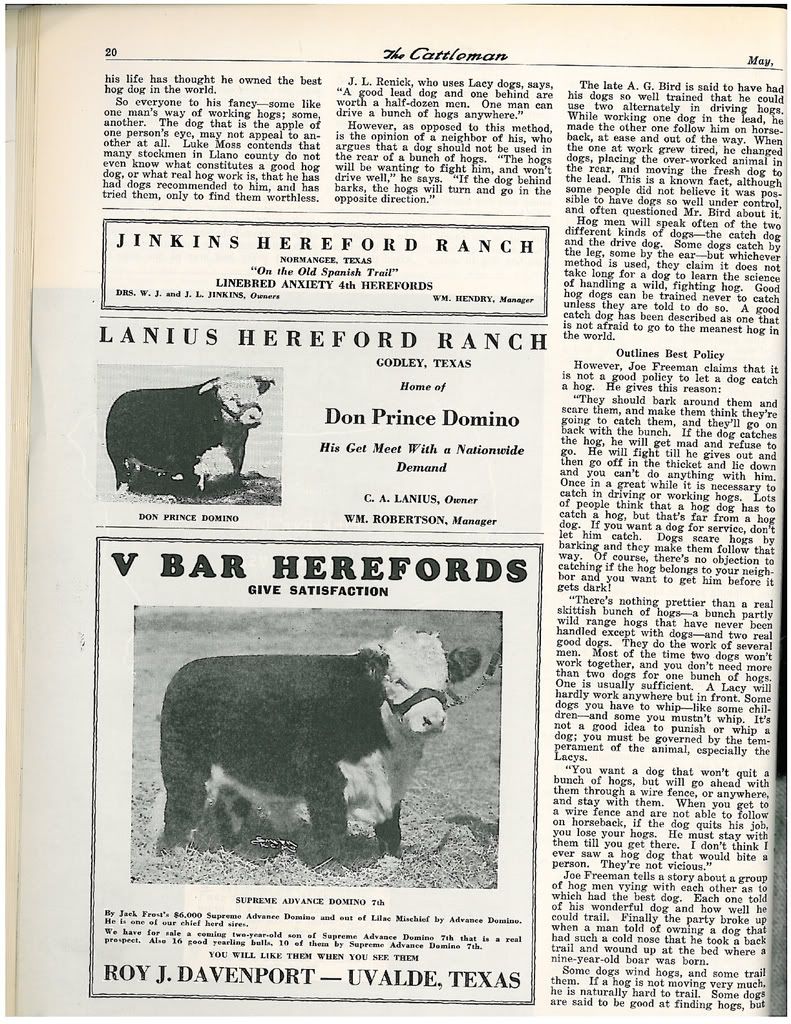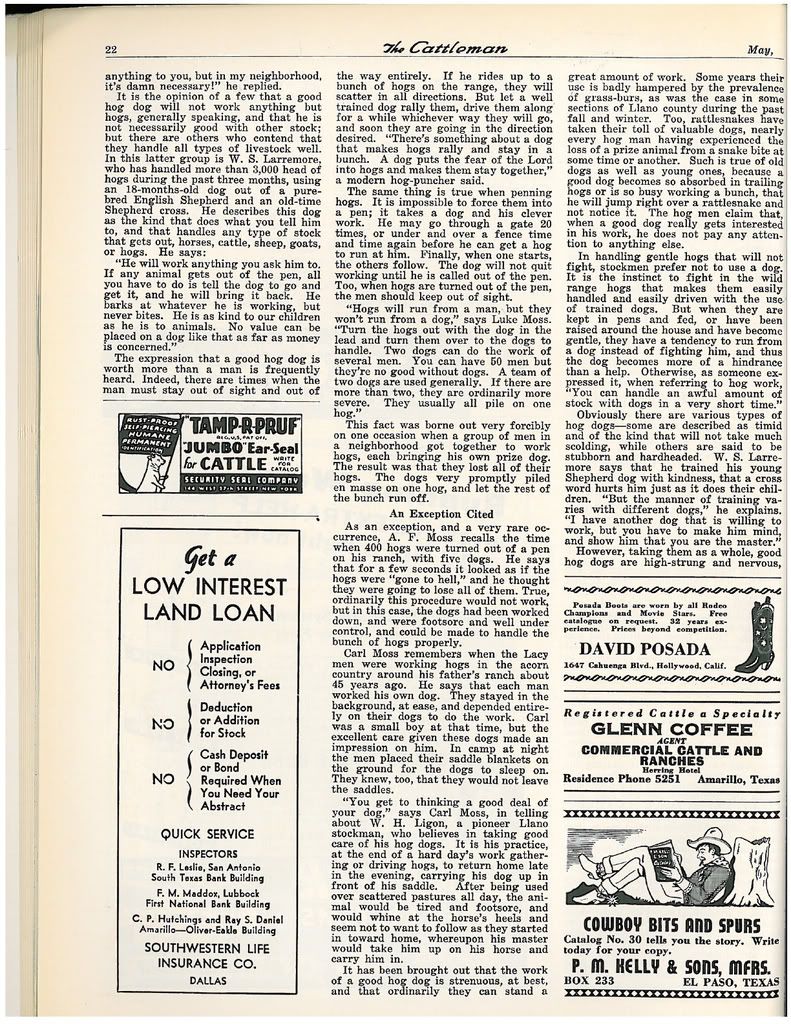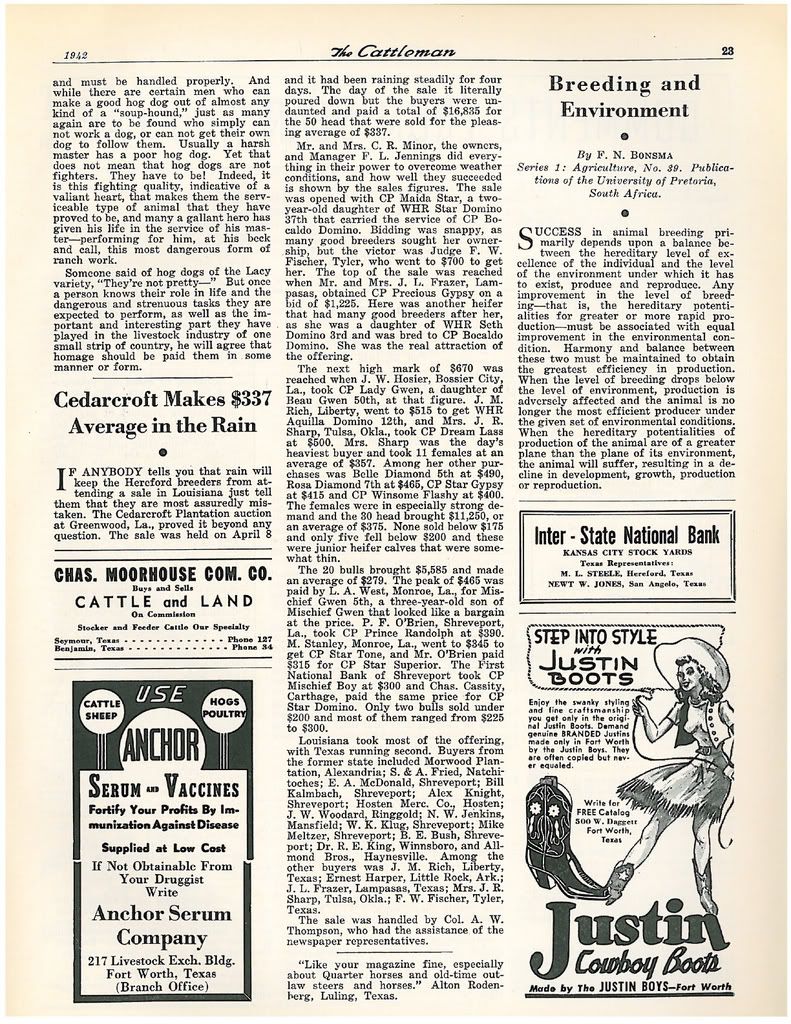Hog Dog Article Featuring Lacys from 1942 Cattleman
Written by Hazel Oatman Bowman for the May 1942 issue of The Cattleman, "Hog Dogs and Their Ranch Uses" is a fascinating study of the Hill Country dogs used to work range hogs. "To many ranchmen of the present generation, a hog dog means a Lacy, so named for the George Lacy, a pioneer of the Marbles Falls section, who introduced this particular type of animal into the Llano-Burnet section some 45 years ago," says Bowman.
She continues, "Some ranchmen contend that the Lacy dogs do not always run true to form, while others declare that their breeding has become uniform and that in appearance they do not show any trace of the hound in their genealogy. They are almost altogether solid colors, ranging from coal blacks to tan, the prevailing colors being blue, black, and tans. The mixed colors show a mixture with other breeds of dogs, according to J.L. Renick, who says, 'The Lacy dogs are very typical. They are slick-haired and of average size. You can tell them at a glance, they're different from other dogs.'
Seth Smith says it is his understanding that the Lacy dogs are a cross between a hound and an English Shepherd. 'They are natural hog dogs and easily trained. Most of them are cedar-berry blue in color, but some were light yellow. They are solid colors, with no specks, and are valuable dogs for any kind of stock.'"
Bowman adds, "A Llano stockman, who is considered exceptionally good at working hogs, used Lacys, but states that there are other good hog dogs, such as Shepherds, some hounds and Collies, though the last named are considered by some to be too timid for hog work. He estimates that more Lacys will make good hog dogs, taking them as a whole, than any other kind. Because of the expert training which the basic stock of Lacy dogs had from their masters, and due to their large amount of experience, their characteristics have been handed down by a rather careful breeding process, and even by inbreeding, which their owners claimed made for good stock in dogs, until most of the Lacys are 'naturals.' Even as young puppies they show a natural instinct for fighting hogs and often are found with a little pig hemmed up in a corner of the fence, barking and playing with it. Thus begins his role as a hog dog."
You can read the piece below, provided in its original form by the Texas and Southwestern Cattle Raisers Association. The quoted Lacy information starts on page 6, but reading the entire article will give you a better understanding of the historical context and purpose of the breed.

